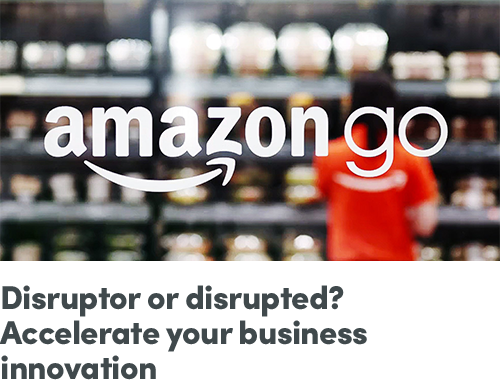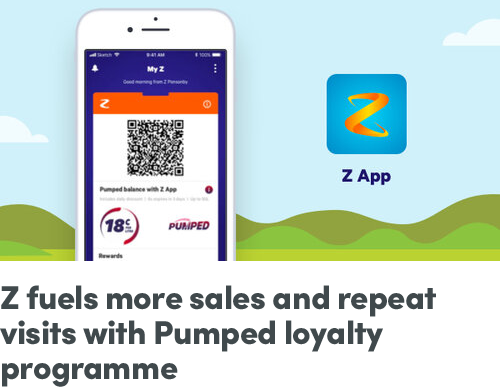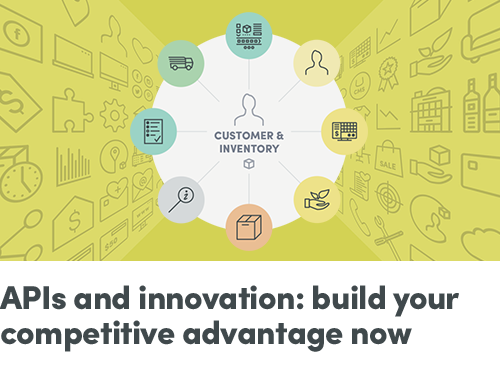Fuel retailers now realise there is enormous untapped potential to revamp their loyalty programmes to drive customer engagement and expand share of wallet. Kelly Brown explains how to elevate fuel loyalty solutions to create more relevant and personalised experiences that grow customer value and differentiate the business.
For many years, fuel retail loyalty programmes were an easy way to drive customer engagement and revenue. However, with changing consumer behaviours and formidable new competition, few meet the needs of today’s retailers or consumers.
Most are simple “earn-and-burn” transaction or discount-based programmes that extend the same set of outdated offers to all customers, regardless of their different behaviours.
They typically relinquish ownership of customer data and relationships to third party coalition loyalty providers that can’t differentiate retailers from their competition. And, crucially, with no access to data on their customers’ preferences, purchasing behaviour or communications, retailers can’t assess what their customers care about to provide the fast and easy personalised services they increasingly expect.
The reality is, today customers don’t just compare your service to that of your competitors, but to the best service they’ve ever received, anytime and anywhere.
At a time when industry regulators like the NZ Commerce Commission say that “motorists are often better off simply choosing the petrol station with the lowest board price or the site with a one-off ‘discount day, rather than counting on a complicated loyalty scheme”, you know that loyalty programmes are well overdue for an overhaul.
Leading fuel retailers are investing in innovation, digitisation and branding to launch new loyalty solutions that deliver a complete view of customers’ preferences and purchasing behaviour, with the ability to create fast and memorable experiences.
And they’re seeing the benefits - loyalty programmes are linked to an 18-30% increase in visits and spends at restaurants and c-stores, and loyalty members annually spend 38% more on average.
If you’re looking at how to develop your loyalty and personalisation capabilities, here are the steps to take to deliver an exceptional CX, and examples of fuel retailers doing it best:
1. Take control with a standalone loyalty programme
In contrast to the third party loyalty programmes, modern loyalty systems give you a 360-degree view of all retail and trade customers, with their entire purchasing history and preferences captured and centrally stored in one database.
By reclaiming ownership of your customer data from all channels and touchpoints – ranging from fuel selections to coffee preferences and convenience items within stores - you can recognise customers consistently wherever they shop with you.
Example: in the UK, Shell Go+ is a very simple mechanism: customers earn visits, instead of points. All they have to do is spend £10 or more on fuel or £2 or more in the shop. They get 10% off all hot drinks and deli by Shell food ranges, and money off fuel every 10 visits, and plenty of treats and surprises along the way.
This programme stands out due to its simplicity. Gaining and redeeming points is simple and doesn’t involve complicated calculations.
2. Extend your loyalty programme to your mobile app
Today loyalty programmes are an integral part of a smartphone app: loyalty mobile app users typically spend 10-20% more a month, and visit 20-30% more frequently each month.
The customer essentially manages their own loyalty experience and should be able to collect points, make payments and redeem points straight through their mobile device at any time. And to really differentiate your offering, make it a simple and engaging experience by enabling both fuel and in-store transactions.
Example: Z Energy, now part of Ampol Australia, expanded its Pumped loyalty programme back in 2019. Customers now save 6 cents per litre every day with no minimum spend at Z and participating Caltex stations, on up to 50 litres. They can choose to stack their discount when spending $40 or more to get an even bigger discount next time. And they earn Flybuys or Airpoints Dollars by scanning their Z or Caltex App, or Flybuys or Airpoints card.
Z’s mobile app plays a key role in their loyalty programme. By delivering loyalty discounts and rewards at point-of-sale and on the app – not just via a card - they lowered the hurdle for customer adoption and made it faster and easier to use. For many users of the app, the big draw is another essential daily fuel: Coffee. The ‘jump the queue’ feature is one of Z’s most popular mobile offerings, with one in four coffees sold now pre-ordered.
3. Apply analytics to create more relevant and personalised offers
The next stage is to use the data-driven insights to create cluster- or even site-specific offers. Tailor your offers for local buying opportunities and use your customers’ transaction histories to customise product bundles, pricing and promotions to increase sell-through without compromising margin.
You can then capitalise on opportunities to craft offers that feel personally relevant to each individual in your database by combining internal data (such as transactions and location) with external data (such as competition, weather, traffic conditions and demographics).
Example: The Chevron Texaco Rewards program rewards Chevron and Texaco customers for their fuel and qualifying in-store purchases at participating stations. But Chevron has also had success offering short-term loyalty schemes. Its AFANity program, which debuted in 2016, gave members points for specific activities, such as visiting a Chevron or Texaco gas station or checking in on the Chevron or Texaco mobile app. They then redeemed the points for rewards, including tickets to football games, autographed memorabilia, officially licensed team gear and unique once-in-a-lifetime experiences with their favourite teams.
Chevron understands that people are not emotionally attached to petrol or convenience items but are very emotional about sports. Their loyalty programme tapped into that to create a positive affinity with the brand.
4. Use AI-driven marketing tools to hyper-personalise the CX
AI algorithms let you analyse customer preferences, predict many aspects of customer behaviour and develop personalised communications, experiences and offers.
By interacting with customers at the right moment, with the right offer and in the right channel, you can drive behavioural changes in customers and multiply the lifetime value of loyalty customers. This is why gamification is the number one loyalty trend businesses plan to invest in during 2024.
Example: Ireland’s Circle K understands the value of gamification with it Play or Park loyalty game. Members get 1 point for every litre of petrol or diesel and 4 points for every €1 spent on eligible purchases at Circle K stores. Members collect points and can play or park: each batch of 200 points qualifies for one entry which they can ‘Play’ for the prize of the month or ‘Park’ for an upcoming prize. And the prizes are big: February 2024’s ‘Experience of a Lifetime’ prize offers two friends the opportunity to drive free for a year, and March 2024’s prize awards 10,000 euro in cash.
This is a great example of an engaging loyalty programme. It includes elements of gamification and has fantastic, tangible prizes for winners.
5. Ecosystem loyalty programmes are next
Looking ahead, large retailers are learning to drive customer loyalty and growth by pooling data within an ecosystem of brands. Multiple companies are tapping into their complementary product and service offerings to develop a joint loyalty programme around a unifying customer value proposition.
While still in their early stages, these ecosystem approaches promise many benefits:
Consumers will receive heightened experiential benefits in addition to faster loyalty rewards growth, more flexible redemptions and an unmatched simplicity and daily relevance.
Retailers and brands will see a rise in reach and frequency of usage. They will gain access to richer, more privileged consumer data, shared infrastructure and cross-marketing opportunities.
Example: bp’s Everyday Rewards loyalty scheme in New Zealand is simple - customers earn 1 point for every litre of fuel and $1 spent on convenience products in-store. It includes ongoing loyalty promotions, such as 6 cents per litre off the fuel price up to 50 litres. And customers benefit from savings across a range of everyday purchases from multiple partners including Woolworths, ASB and Vineonline.
Everyday Rewards is a powerful purchase motivator. Users gain points across a variety of partners and aren’t locked into spending rewards with one brand. People will be more motivated to use bp stations if they know their loyalty will be rewarded with other experiences and offers, not just fuel discounts or free car washes.
As you look at how to modernise your loyalty programme, ensure you focus on the end-to-end customer experience. You have a fantastic opportunity to leap-frog your competition by taking an ecosystem-centric approach that gives your customers a ‘next-generation’ experience.

Z Energy fuels more sales and repeat visits
Z Energy, New Zealand’s largest fuel retailer and part of Ampol Australia, developed Pumped to replace a third-party loyalty scheme and create a more seamless mobile and in-store customer experience.
Built using Infinity’s Loyalty module, Pumped uses a QR barcode on Z’s mobile app to identify the customer at point-of-sale or self-serve online payment terminals and add any relevant offers to their transaction. It also lets them consume any offers they have earned, such as free coffee, carwashes or LPG bottle swaps.
Z can now create new offers that help engage customers, offer them valuable rewards and encourage repeat visits. And Pumped is now Z’s cornerstone for innovation, with the ability to deliver the unified and personalised experiences its customers expect.
“With a single view of the customer we are right in the middle of the transaction with the customer in real-time. We know where, when and how they shop and, over time, will find new ways to interact, personalise and reward each customer’s experience.”
Andy Stewart, Head of Digital & Operations – Low Carbon Futures, Z Energy
This blog was originally published on 12 February 2023 and updated on 21 February 2024.
Want help to modernise your fuel loyalty programme?
As you transform your customer experience to deliver the seamless and personalised buying journeys your customers crave, your retail systems must transform as well. If you’re looking for help to develop your loyalty and personalisation capabilities, get in touch. We’d love to help you develop more meaningful relationships that deliver profitable growth.
For more on how to deliver every c-store customer a personalised, fast and seamless experience, download our new ebook:




















